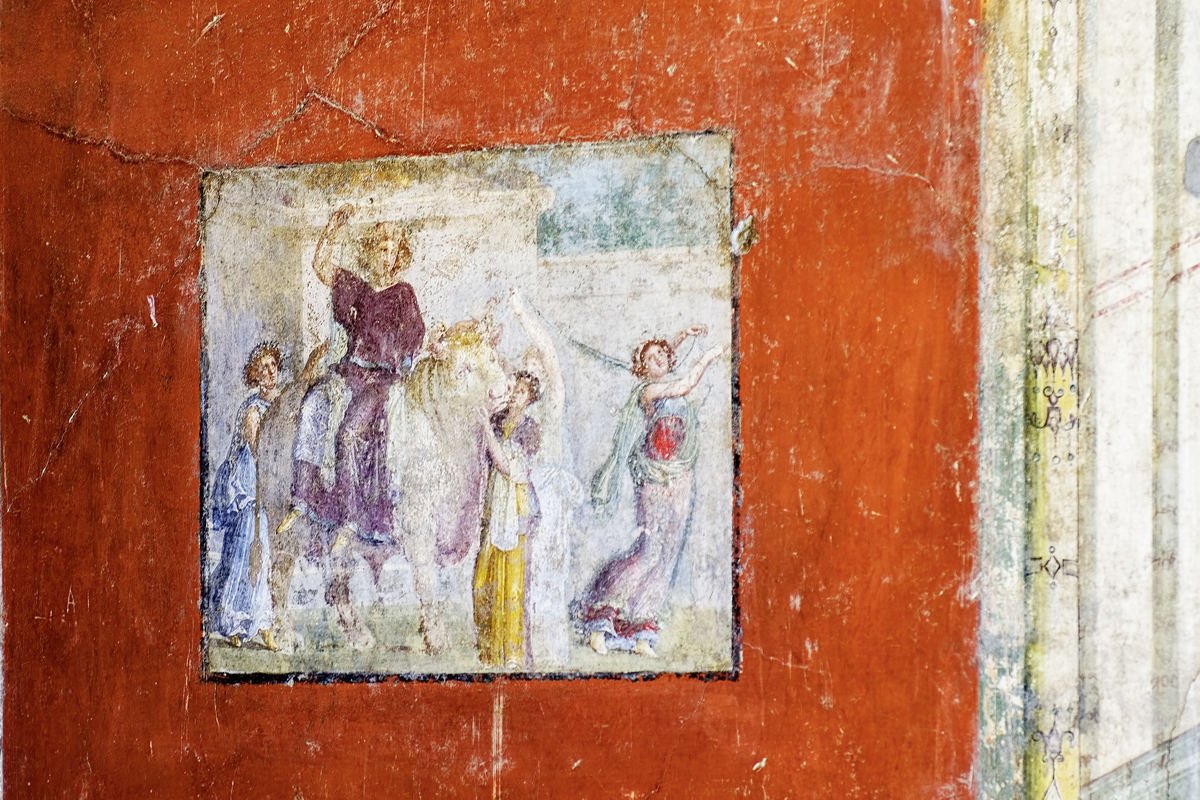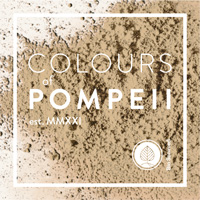Orange
In Pompeji:
Although orange was a popular and widely used colour in Roman times, people didn’t know its name, as the eponymous fruit (which is originally from China) wasn’t introduced to Europe until much later. The colour was nonetheless widespread: amber – a precious stone in the form of fossilised resin – had a similar value to gold and was highly desirable. In ancient Rome, the emperor, high-ranking officials and wealthy private individuals drank from amber vessels. Amber became the epitome of luxury, including in fashion. Rich Roman women would dye their hair amber, thus showing off their social status. So it’s no wonder that amber was also known as ‘the gold of the North’.


IN THE MODERN AGE:
Orange is a colour for people with guts. It is an expression of self-confidence – a view shared by the famous painter Wassily Kandinsky. It combines the charisma of yellow with the passion of red, which is perhaps one of the reasons why orange has played such a prominent role on the catwalks of Paris, Milan and New York in recent years.
IN THE HOME:
Orange conveys enthusiasm and stimulates creativity, making it an excellent choice for all living and working spaces. It is, however, more suited to being an accent colour; you wouldn’t really decorate an entire room in orange. It’s worth trying a combination of green and orange, as green often accentuates the lustre of orange. Orange knows no bounds, except for bedrooms. Here, its stimulating effect tends to make it less suitable.

Orange

In Pompeji:
Although orange was a popular and widely used colour in Roman times, people didn’t know its name, as the eponymous fruit (which is originally from China) wasn’t introduced to Europe until much later. The colour was nonetheless widespread: amber – a precious stone in the form of fossilised resin – had a similar value to gold and was highly desirable. In ancient Rome, the emperor, high-ranking officials and wealthy private individuals drank from amber vessels. Amber became the epitome of luxury, including in fashion. Rich Roman women would dye their hair amber, thus showing off their social status. So it’s no wonder that amber was also known as ‘the gold of the North’.

IN THE MODERN AGE:
Orange is a colour for people with guts. It is an expression of self-confidence – a view shared by the famous painter Wassily Kandinsky. It combines the charisma of yellow with the passion of red, which is perhaps one of the reasons why orange has played such a prominent role on the catwalks of Paris, Milan and New York in recent years.

IN THE HOME:
Orange conveys enthusiasm and stimulates creativity, making it an excellent choice for all living and working spaces. It is, however, more suited to being an accent colour; you wouldn’t really decorate an entire room in orange. It’s worth trying a combination of green and orange, as green often accentuates the lustre of orange. Orange knows no bounds, except for bedrooms. Here, its stimulating effect tends to make it less suitable.
Our shades of Orange
Catia

Catia:
The gens Catia was an old plebeian family in Rome. However, its male representatives served the Empire over many centuries as loyal soldiers and officials. In particular, one female member stands out: the rebellious Catia, who was mentioned by Horace: she wore her gowns short to reveal plenty of leg, thus going against the prevailing attitudes of the majority. This fine orange tone pays tribute to her.
Fulvia:
Fulvia was probably the first woman to appear on a Roman coin (other than the goddesses). As the wife of Mark Anthony, she played a very active role in political life by Roman standards and supposedly even carried a sword, which incurred the displeasure of many men. Many reports paint her in an unfavourable light, depicting her as greedy and domineering. Maybe she was just too forceful for her male contemporaries. This expressive orange is a homage to this strong woman.
Fulvia

Decius

Decius:
Consul and commander-in-chief Publius Decius Mus sacrificed himself at the Battle of Vesuvius, thus rescuing the Roman army in a battle that had already been given up as a lost cause. The gens Decia was not an aristocratic family, but instead came from common stock. This orange is inspired by their down-to-earth nature.
Our shades of Orange
Catia

Catia:
The gens Catia was an old plebeian family in Rome. However, its male representatives served the Empire over many centuries as loyal soldiers and officials. In particular, one female member stands out: the rebellious Catia, who was mentioned by Horace: she wore her gowns short to reveal plenty of leg, thus going against the prevailing attitudes of the majority. This fine orange tone pays tribute to her.
Fulvia

Fulvia:
Fulvia was probably the first woman to appear on a Roman coin (other than the goddesses). As the wife of Mark Anthony, she played a very active role in political life by Roman standards and supposedly even carried a sword, which incurred the displeasure of many men. Many reports paint her in an unfavourable light, depicting her as greedy and domineering. Maybe she was just too forceful for her male contemporaries. This expressive orange is a homage to this strong woman.
Decius

Decius:
Consul and commander-in-chief Publius Decius Mus sacrificed himself at the Battle of Vesuvius, thus rescuing the Roman army in a battle that had already been given up as a lost cause. The gens Decia was not an aristocratic family, but instead came from common stock. This orange is inspired by their down-to-earth nature.
Diedenhofener Straße 1
D-54294 Trier
bella-casa@mille-deco.com
Colours of Pompeii is a brand of premium wall paints. The range is inspired by the colours that one would once have seen on a stroll through Pompeii. Each colour is timeless and modern – and can be combined in a variety of ways.
